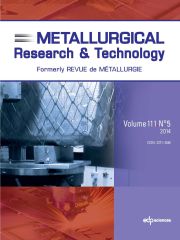Article contents
Integrated environmental assessment of future energy scenariosbased on economic equilibrium models
Published online by Cambridge University Press: 03 June 2014
Abstract
The future evolution of energy supply technologies strongly depends on (and affects) theeconomic and environmental systems, due to the high dependency of this sector on theavailability and cost of fossil fuels, especially on the small regional scale. This paperaims at presenting the modeling system and preliminary results of a research projectconducted on the scale of Luxembourg to assess the environmental impact of future energyscenarios for the country, integrating outputs from partial and computable generalequilibrium models within hybrid Life Cycle Assessment (LCA) frameworks. The generalequilibrium model for Luxembourg, LUXGEM, is used to evaluate the economic impacts ofpolicy decisions and other economic shocks over the time horizon 2006−2030. A techno-economic (partialequilibrium) model for Luxembourg, ETEM, is used instead to compute operation levels ofvarious technologies to meet the demand for energy services at the least cost along thesame timeline. The future energy demand and supply are made consistent by coupling ETEMwith LUXGEM so as to have the same macro-economic variables and energy shares driving bothmodels. The coupling results are then implemented within a set of Environmentally-ExtendedInput-Output (EE-IO) models in historical time series to test the feasibility of theintegrated framework and then to assess the environmental impacts of the country.Accordingly, a disaggregated energy sector was built with the different ETEM technologiesin the EE-IO to allow hybridization with Life Cycle Inventory (LCI) and enrich the processdetail. The results show that the environmental impact slightly decreased overall from2006 to 2009. Most of the impacts come from some imported commodities (natural gas, usedto produce electricity, and metalliferous ores and metal scrap). The main energyproduction technology is the combined-cycle gas turbine plant “Twinerg”, representingalmost 80% of the domestic electricity production in Luxembourg. In the hybrid EE-IOmodel, this technology contributes to around 7% of the total impact of the country’s netconsumption. The causes of divergence between ETEM and LUXGEM are also thoroughlyinvestigated to outline possible strategies of modeling improvements for future assessmentof environmental impacts using EE-IO. Further analyses focus first on the completion ofthe models’ coupling and its application to the defined scenarios. Once the coupling isconsistently accomplished, LUXGEM can compute the IO flows from 2010 to 2030, while theLCI processes in the hybrid system are harmonized with ETEM to represent the futuredomestic and imported energy technologies.
Keywords
- Type
- Research Article
- Information
- Metallurgical Research & Technology , Volume 111 , Issue 3: Social Value of Materials (SAM 7) , 2014 , pp. 179 - 189
- Copyright
- © EDP Sciences 2014
References
- 7
- Cited by


